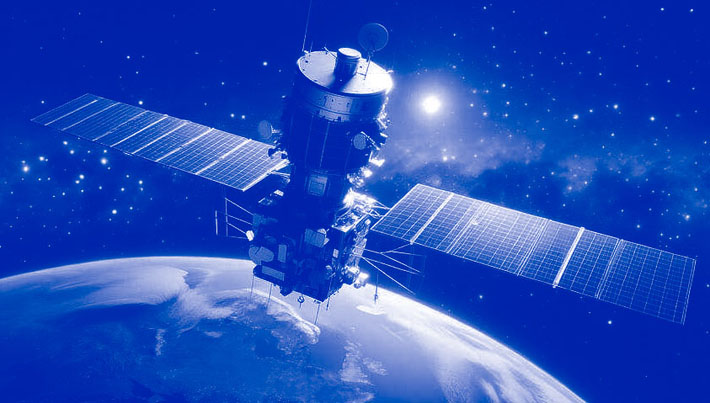Satellite Internet
Wireless satellite Internet technology in the near future in all regions where terrestrial Internet connection technologies are unavailable will allow half of humanity to access the World Wide Web. This time is very close!
Elon Musk's Starlink Satellite Internet
Starlink is a technology for accessing satellite Internet in all regions where terrestrial Internet connection technologies are unavailable based on a constellation of artificial satellites from SpaceX. Elon Musk's company uses its SpaceX rockets (Washington State, USA), having a full production cycle, from manufacturing satellites to launching them into orbit.
The website https://wirelesstechnology.site is dedicated to wireless technology and devices, and since 2021, Starlink, with the participation of SpaceX, has successfully provided Internet access in the United States and Canada. As of 2023, the number of Starlink subscribers is about 3 million. As of 2024, SpaceX has successfully launched almost 7,000 Starlink satellites into orbit. Starlink has already signed several agreements with the US Department of Defense to provide satellite communications services. Starlink, led by Elon Musk, is successfully developing and providing the Internet in 100 countries. Elon Musk sets the team a goal of launching 42,000 satellites, which will theoretically allow servicing 50 million ground routers with Wi-Fi and Bluetooth connections to 40 devices. Or a smaller number of Wi-Fi routers at high speed.
Today, about half of humanity does not have access to the World Wide Web due to their location. Starlink aims to completely solve the problem with this wireless technology. The Internet access speed has already consistently exceeded the standard 100 Mbps with a ping of about 20 - 40 ms (up to 15 ms), which is enough not only for watching online video in high definition, online video conferences, but even for modern online games and eSports. To increase the speed to 1 Gbps, it is enough to simply increase the number of satellites.

The Starlink kit, including the Starlink equipment itself, a Wi-Fi router, cables and mounting brackets, comes to the buyer ready for use. It is enough to take the purchase out of the box, assemble the kit, connect the components with the wires from the kit and fix the antenna. For good Internet speed, the Starlink antenna should be directed to the sky without interference. Special Starlink software will help determine the best installation location, organize the connection, payment of the selected tariff from a credit card and connection to the Internet.
Project Kuiper - satellite Internet from Amazon
Amazon Corporation has its own project for the deployment of a global satellite Internet network - Project Kuiper. Similar to Elon Musk's Starlink, Project Kuiper is going to bring the Internet to all regions where terrestrial Internet connection technologies are not available.
Amazon has successfully tested prototypes of this wireless technology. In test mode, a variety of information was transmitted and received over a distance of 600 miles via a laser channel, including simulating purchases in online stores, playing high-definition video and visiting various web pages. Users connected from terrestrial terminals via Wi-Fi.
Amazon announced the project back in 2019, and in 2020 received approval from the US Federal Communications Commission (FCC) to deploy its satellite constellation. The regulator's permission obliges Amazon to adhere to certain time frames and launch half of the devices by 2026.
Initially, the project's management refused a profitable cooperation with SpaceX to launch satellites into orbit quickly and inexpensively. Instead of SpaceX, Jeff Bezos, the head of Amazon, chose Blue Origin, Arianespace, and United Launch Alliance (ULA). Moreover, Blue Origin and its New Glenn rocket also belong to Jeff Bezos. Project Kuiper will pay Blue Origin $585 million, which is a third of the price for launching satellites into orbit.
Unfortunately, United Launch Alliance (ULA), Amazon's partner in launching satellites into orbit, said it could not launch satellites into orbit on time. Blue Origin is also failing. Elon Musk's SpaceX is rushing to the aid of this wireless technology.
Chinese satellite internet Qianfan
The Chinese are actively developing their program of a global low-orbit satellite Internet network. In 2024, China launched the first batch of communications satellites to form a low-orbit satellite group Qianfan Constellation. The Qianfan project is being carried out by Shanghai Spacecom Satellite Technology (SSST), with government support. The satellites were manufactured by the Shanghai company GeneSat. China plans to place a mega-constellation of 14 thousand satellites in orbit at altitudes of 200 - 1000 miles.
The Qianfan satellite internet project is being implemented in two stages. In the first stage, the group will increase to 648 - 1,296 satellites. They will operate at an altitude of 600 - 1000 miles. In the second stage, the satellites will be placed in lower orbits of 200-300 miles to reduce access time and increase the speed of satellite Internet.
Qianfan is ahead of two other major Chinese low-orbit satellite network projects. The state-owned satellite Internet Guowang from China Satellite Network Group expects to implement a group of 13,000 devices. A private Chinese company, Landspace, has a Honghu-3 project and intends to launch 10,000 satellites into low orbit.
Huawei's Huawei Pura 90 series of smartphones and other mobile devices are planned to support low-orbit satellite Internet. Satellite Internet is needed to connect ordinary users to the Internet. This wireless technology is also in demand in the areas of IoT, autonomous cars, smart cities, distance learning, medicine, navigation, access to remote objects, security systems and more.

